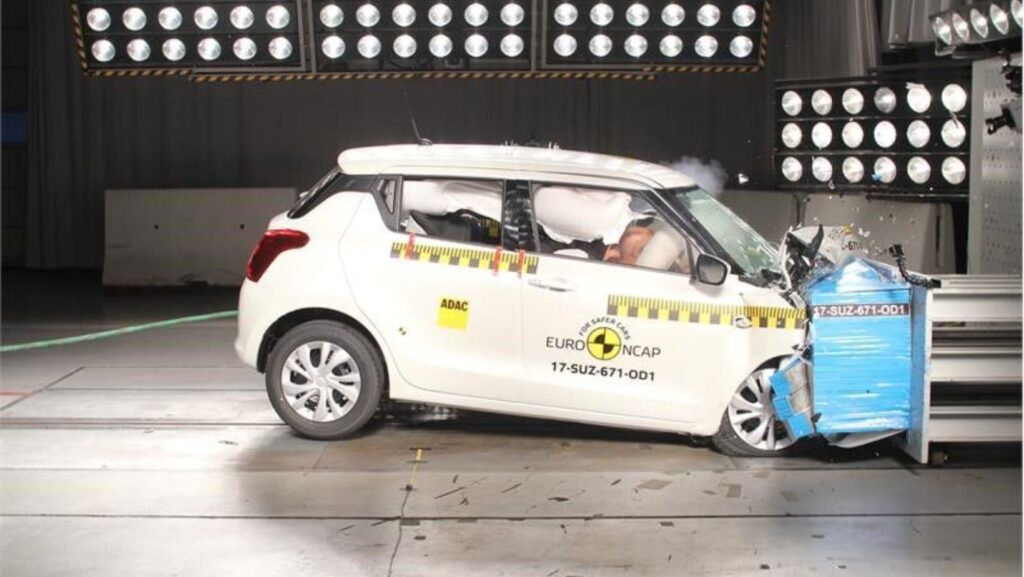Suzuki, a longstanding contender in the global automotive arena, has earned its reputation for crafting budget-friendly, dependable vehicles. Yet, one area where Suzuki consistently grapples with adversity is its performance when subjected to the rigorous trials of crash tests. In an era where vehicle safety reigns supreme, the recurring subpar results of Suzuki’s cars in crash tests have sparked disquiet among consumers and industry experts alike. In this article, we will embark on a journey to dissect the underpinnings of Suzuki’s recurrent disappointments in crash test evaluations.
- Deficiency in Structural Resilience
Foremost among the rationales behind Suzuki’s stumbles in crash tests is the conspicuous dearth of structural resilience within their vehicles. In the event of a collision, a car’s structure must adeptly absorb and dissipate the forces at play, safeguarding the well-being of its occupants. Regrettably, Suzuki vehicles frequently display a deficiency in robust structural design, leading to deformation and crumpling upon impact, consequently imperiling the passengers inside.
Read more – Revving Up the Roads: Unveiling the New Harley Davidson X440
- Insufficient Airbag Systems
Another pivotal contributor to Suzuki’s travails in crash tests is the inadequacy of their airbag systems. Airbags play a pivotal role in mitigating injuries during collisions, serving as a cushioning buffer for both the driver and passengers. In comparison to their competitors, Suzuki cars often come equipped with fewer airbags, and their placement may not optimally maximize protective capabilities.
- Obsolescent Safety Features
Suzuki’s strategy regarding safety features has not eluded examination, drawing attention for its perceived antiquity in contrast to the proactive strides taken by its automotive counterparts. While rival manufacturers have wholeheartedly embraced state-of-the-art safety technologies like adaptive cruise control, lane departure warning, and automatic emergency braking, Suzuki lags in the incorporation of these advanced features into their vehicle lineup. The absence of contemporary safety tech heightens the risk of accidents and consequent underperformance in crash tests.
- Marginal Emphasis on Research and Development
In the automotive landscape, investing in research and development (R&D) stands as a linchpin for maintaining competitiveness, especially concerning safety. Companies that champion R&D typically yield vehicles fortified with superior safety features, ensuring commendable performance in crash tests. Regrettably, Suzuki has faced criticism for apportioning meager resources to R&D endeavors, resulting in a dearth of innovation and progress in safety measures.
Read more.. What is Luxury?: Rolls Royce
- Economical Shortcuts
Suzuki’s renown for delivering economical vehicles, while a commendable attribute, also harbors a paradoxical pitfall. To maintain cost-effectiveness, the company occasionally resorts to economizing measures that can compromise safety. Such measures may encompass the adoption of more economical materials, thinning the steel gauge used in the vehicle’s construction, or economizing on safety components. These frugal tactics can cast a shadow on the car’s resilience in the face of collisions.
Conclusion
Though Suzuki has etched a legacy for affordability and reliability, its recurrent stumbles in crash tests beckon profound concerns about the safety of its automotive offerings. The factors contributing to Suzuki’s consistent underperformance in crash tests encompass a complex web of deficiencies, including structural frailties, subpar airbag systems, antiquated safety features, a limited focus on R&D, and cost-cutting measures. For consumers who prioritize safety as a paramount criterion in their vehicle selections, a meticulous evaluation of these facets when considering Suzuki cars is imperative. Ultimately, Suzuki must recalibrate its priorities to usher in safety enhancements, thereby reinstating consumer trust and bolstering its position in the ever-evolving automotive landscape.
Read more – Eco-Friendly Commuting: A Guide to Safely Riding Ola Electric Bikes

